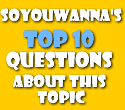4. SUBMIT YOUR MANUSCRIPT
Editors receive thousands of manuscripts in a year and will almost certainly reject any that aren't properly formatted. Pay attention to the guidelines they have sent you and follow them to the letter. Each publishing company will have different guidelines, but in general:
- Manuscripts should be double-spaced with 1" to 1-1/2" margins on the top, bottom and sides of each page.
- Your name, address and social security number should be in the top left-hand corner of the first page, single-spaced.
- In the right hand corner, you should type your phone number. Then double space down three times, center the title, double space, then "by", double space again, and your name.
- Space down to the middle of the page and begin the text of your manuscript.
- Each successive page should include your last name, your title, and the page number at the top.
- Don't include illustrations with your manuscript unless you really are a bona fide artist. Most publishing companies have illustrators they regularly work with, and prefer to match a well-recognized illustrator with a new author for the sake of name recognition.
- Avoid day-glo paper or envelopes, don't add stickers, pictures or slides, don't dot your i's with little hearts . . . in other words, be tactful. Although it's a children's book, it's an adult's business.
- All you need to send in is a copy (not the original) of your manuscript, a self-addressed stamped envelope (always include one of these - they won't write back if you don't), and a brief cover letter.
Ah, the cover letter. The cover letter is key. It's the first thing the editor will read, and if it's poorly written, then the editor will assume the manuscript is poorly written as well. Here are our tips:
- Address it to the Submissions Editor, unless you've made a real contact with a particular editor. Don't pretend to know someone you don't, they're on to that little ploy.
- Half a page. Repeat. Half. A. Page. You send in a cover letter that's longer than your manuscript, and the whole pile is likely to end up under a Duraflame.
- Aim for simple and direct, letting the editor know what type of book it is and why it's unlike anything else already out there. Don't tell them you're just like Dr. Seuss or Judy Blume. You're not.
- Don't blather on about how much the kids in your family love it. Don't include quotes. It's just an introduction, the editor's decision will be based on the manuscript itself.
- Some publishers prefer query letters, especially for longer manuscripts. A query letter is like a condensed manuscript, and you have to give the editor enough of a feel of the style and language of the book that they'll be enticed to request the whole thing. It should still be short. Less than one page. But feel free to include a great paragraph from your manuscript as well as a detailed description of what happens and why it's fabulous.


